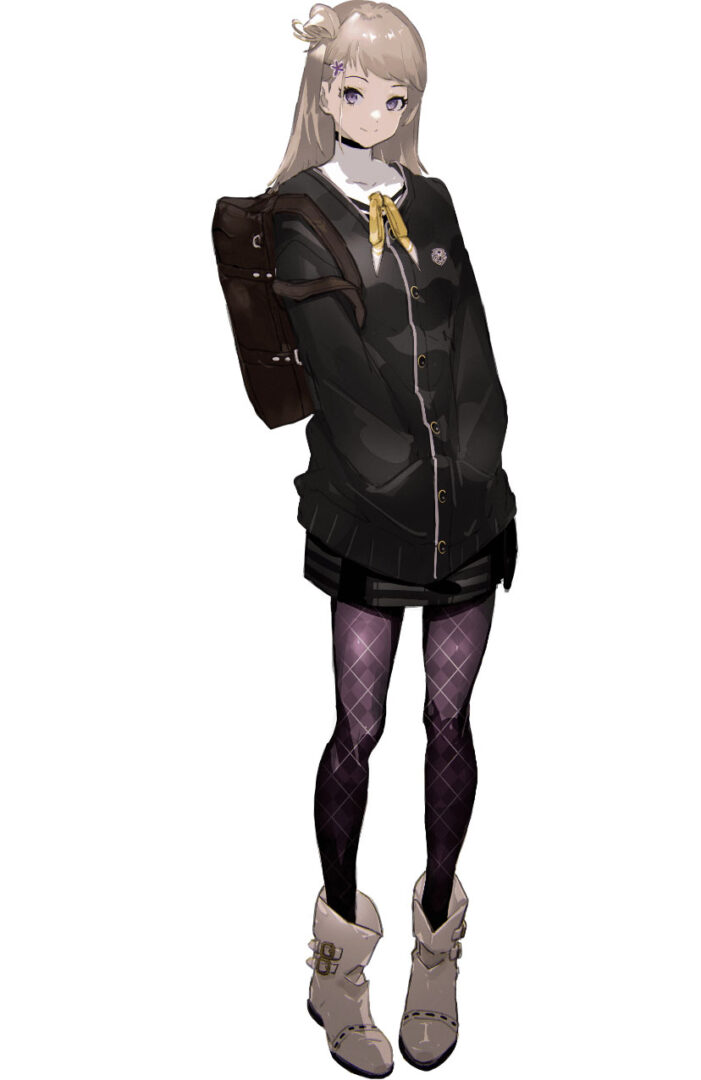
Battles take place on a 2D plane, filled with obstacles like destructible walls and poison plants. Monark stands in a middle ground between classic tactics RPGs and the regular turn-based fair. However, fighting still has its share of virtues. It pushes you through the mud of the same battles in the same areas, over and over again. The simple joy of grinding, often a means of expressing a setting’s particular character, is a purely repetitive slog. Since Monark relies on the same set of units, on discreet battles without any interconnection, it pushes you through similar battlegrounds and enemies. Battles don’t only grow in difficulty, but stretch out in space and time, involving more enemies who take more hits over a larger area. Characters repeat barely differing theses back at each other in lengthy cutscenes. I undoubtedly felt this more because I was under a deadline, but everything in Monark takes forever. That ponderousness is unfortunately a pattern. A world where time has stopped Screenshot by Gamepur Some are undoubtedly brain teasers, but just as often they are trivial or obscure. Alongside my notes for this review are dozens of little notes of phone numbers, dates, and codes to help me solve puzzles. The puzzles themselves are ponderous, often requiring multiple, difficult-to-find cross-references. Instead, the horror of digital knowledge is just a fact of navigating Shin Mikado. It’s easy to extrapolate this to digital invasion of privacy, but the game never goes there. You find the codes for locked doors or convince hiding students to let you in by scouring your phone and school campus for the right words or secrets. The “play” of the dungeon is about discovering information. Each “dungeon” only has one or two proper battles. This empty aesthetic is a central part of the game’s puzzles. The game doesn’t really have anything to say about digital, haunted space - it is instead a flicker of style, for its purely practical interfaces. When transported to the otherworld, the screen flickers with blocky pixels.

Receiving cell phone calls is the primary means of traveling between the otherworld and the school. In other horror influences, Monark does incorporate a kind of digital horror aesthetic. Instead, Monark sweeps that aside for a focus on the lore of its haunting setting. The sudden disruption of normalcy and the recontextualizing of suddenly fraught relationships can make for terrifying and heartfelt horror. Monark’s remaining mysteries are plotty rather than evocative. The supernatural occurrences of the school are quickly explained in a flurry of proper nouns and game systems.

Self evidently, Monark pulls from a long history of Japanese school-based horror media such as The Drifting Classroom and Corpse Party. As he proceeds on his mission, the dean’s motivations, and the school’s true nature, are drawn into question. With this in mind, the dean recruits the protagonist as part of the “true student council,” and tasks him with defeating the villainous pact bearers. His powers enable him to combat the pact bearers haunting the campus. This makes him an enemy of the academy, but also potentially its greatest asset.

Instead of one of the deadly sins, he is bound to the mysterious entity Vanitas. Rescued by his little sister Chiyo, the player-named protagonist finds that he too is a pact-bearer. These Monarks, each represented by one of the seven deadly sins, grant obscene power in exchange for the distortion of the world.

This chaos is the result of pact bearers, regular human beings who seal promises with Daemons from the Otherworld. A maddening mist descends over much of the academy. A strange magic barrier seals the school off from the rest of the world. The game opens with a cutscene depicting regular life at the secretive Shin Mikado Academy. Monark constantly strains within the confines of expectation, unable to push its ambitions through. Its characters are anime stock, only given subversion in flickers and whispers. Its unique take on tactical RPG combat gets tiresome and empty over dozens of hours. Its distinctive, anime gothic key art languishes in the cel-shade of its more conventional 3D models. At once, it feels like a follow-up to massive, genre-defining hits like Persona 5 and a plucky smaller-budget JRPG inspired by modern classics.


 0 kommentar(er)
0 kommentar(er)
